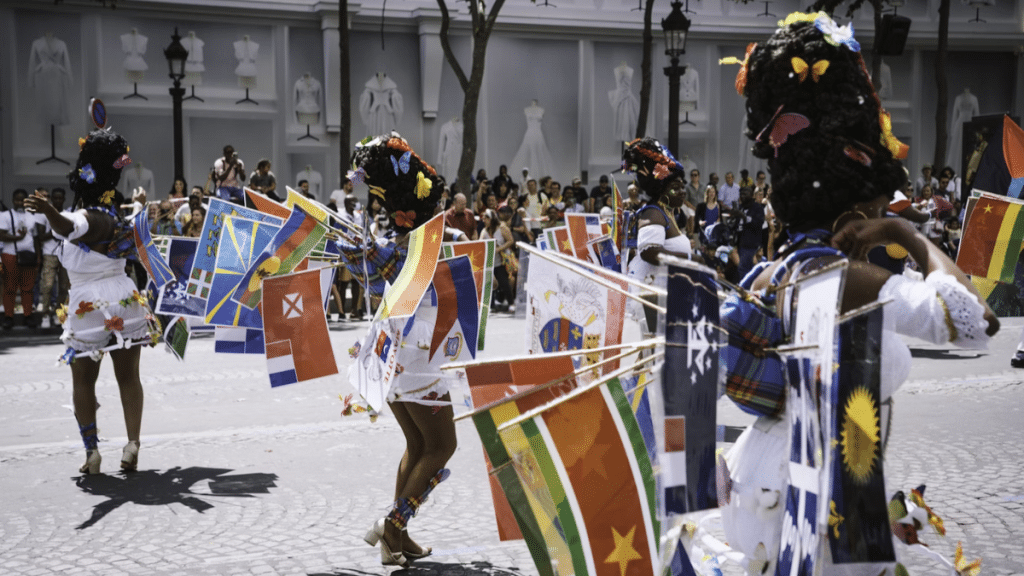Latin America is a vibrant region known for its rich diversity and culture. From Mexico in the north to Argentina and Chile in the south, each country brings its own unique traditions and values. The national flags of Latin American countries serve as poignant symbols of heritage, pride, and identity, reflecting stories of nations’ journeys, struggles for independence, and cultural histories. In this article, we’ll dive into the history, symbolism, and unique aspects of Latin American flags, shedding light on their cultural significance.
The History and Evolution of Latin American Flags
The history of Latin American flags is a journey through time, illustrating the region’s past marked by colonization, independence movements, and cultural evolution. During the Colonial Era, many countries in Latin America used flags influenced by colonial powers, primarily Spain and Portugal. The 19th Century saw the rise of Independence Movements, leading nations to design new flags symbolizing freedom and national unity. Today, modern flags represent a blend of history with contemporary symbols of national pride and cultural heritage. For more historical context, refer to History.com.
By exploring their history, we gain insight into the identity and pride of each nation.
Symbolism in Latin American Flags
Colors on Latin American flags hold significant meanings. For example, green often represents lush landscapes or hope for future generations, yellow symbolizes natural wealth or the sun, and red is a marker of independence and patriotism. Emblems and patterns, such as the Andean condor on Ecuador’s, Colombia’s, and Bolivia’s flags, or Brazil’s blue globe with stars, embody power, freedom, and unity.
These flags are more than colorful patterns; they are emblems of shared struggles, triumphs, and the rich tapestry of Latin American culture.
Focus on Central America Flags
Central American countries boast flags with unique characteristics that tell rich stories of their past and aspirations.
- Guatemala: Sky blue stripes symbolize its location between the Pacific Ocean and Caribbean Sea, with a quetzal bird emblem of liberty.
- Honduras: Five stars represent the original five nations of the Confederation of Central America, while blue and white stripes convey peace and unity.
- Costa Rica: Horizontal stripes in blue, white, and red reflect ideals of sky, peace, and freedom, with the emblem depicting three volcanoes symbolizing the country’s landscape.
Flags mirror the diverse cultures and histories of Latin America, portraying pride, resilience, and identity. Understanding these symbols offers a deeper appreciation of shared values and histories across the region.
Unique Aspects of South America Flag Designs
South American flags are a tapestry of vibrant colors and unique designs, each carrying deep cultural and historical significance. The diversity in these flags reflects the continent’s rich heritage, with common elements shared among nations.
Stars and Stripes
Many South American flags include stars, representing unity among states or regions, such as in Brazil and Chile. Cultural emblems and historical influences from the colonial past shape the design of these flags, as seen with Argentina’s Sun of May and Bolivia’s Andean condor.
Patterns Across Latin America Flags
Regional Similarities
Shared historical events have influenced the design of Latin American flags, with common motifs such as stripes, stars, and patriotic colors. The tricolor pattern is prevalent, symbolizing political ideologies and aspirations.
Symbolic Colors
Red often symbolizes revolutionary ideals, blue represents liberty, and green stands for natural wealth. These colors are consistent across different countries, reflecting shared values in the region.
Historical Connections
Incorporation of symbols depicting myths, folklore, and indigenous heritage is common in Latin American flags. These patterns connect nations within Latin America and globally, sharing experiences and aspirations.
These shared symbols in Latin American flags offer a meaningful way to connect with the cultural and historical narratives of each nation.
Countries with Multiple Flags
In Latin America, some countries use multiple flags for civil, state, and military purposes, reflecting various facets of national identity. Argentina and Venezuela, among others, have different flag versions for distinct contexts. This practice is not unique to Latin America, as countries like Spain and the United Kingdom also employ multiple flags.
How to Identify and Remember Flags of Latin America
Recognizing Latin American flags can be made easier through mnemonic devices, visual aids, interactive quizzes, and breaking down regions for better comprehension. By using these strategies, you can develop a deeper connection to the flags of Latin America, each telling a unique story of culture and history.
Embrace the vibrant colors and rich symbolism of Latin American flags to appreciate the diverse cultures and histories within this dynamic region. Each flag reflects a unique narrative of national pride, resilience, and identity, speaking to the shared values of Latin America as a whole.
